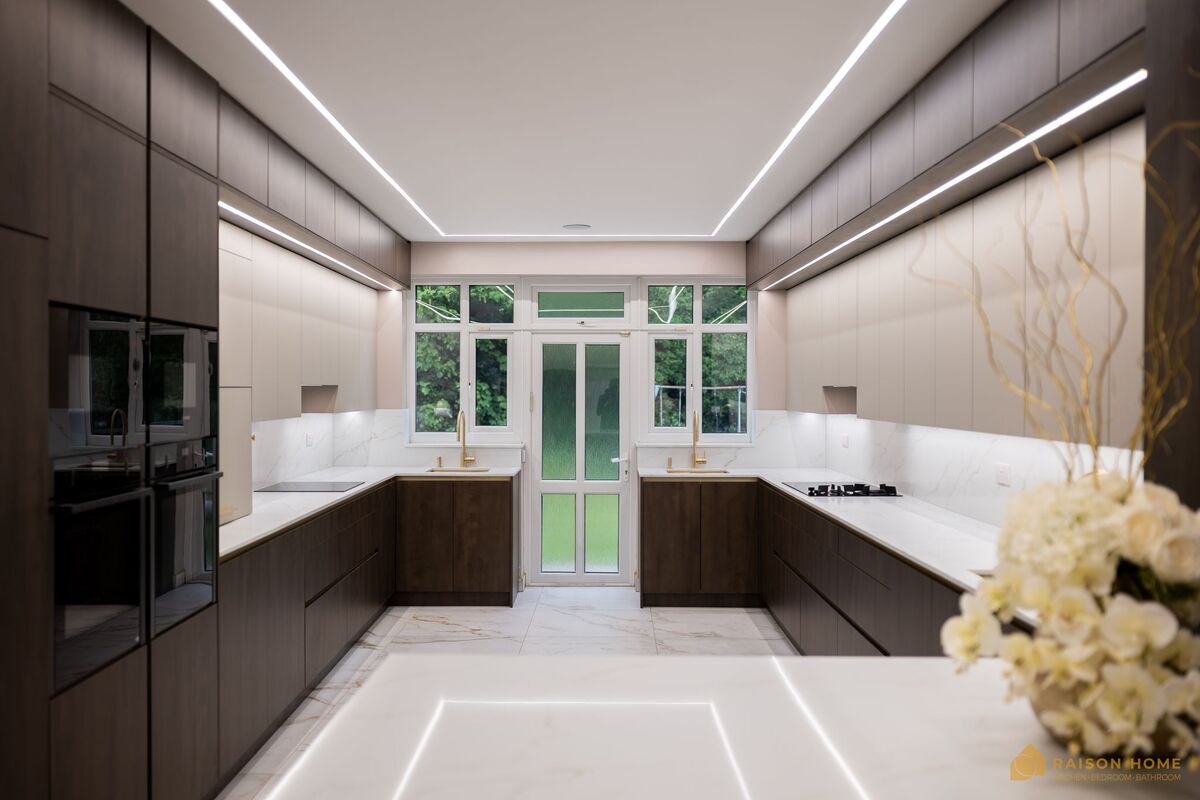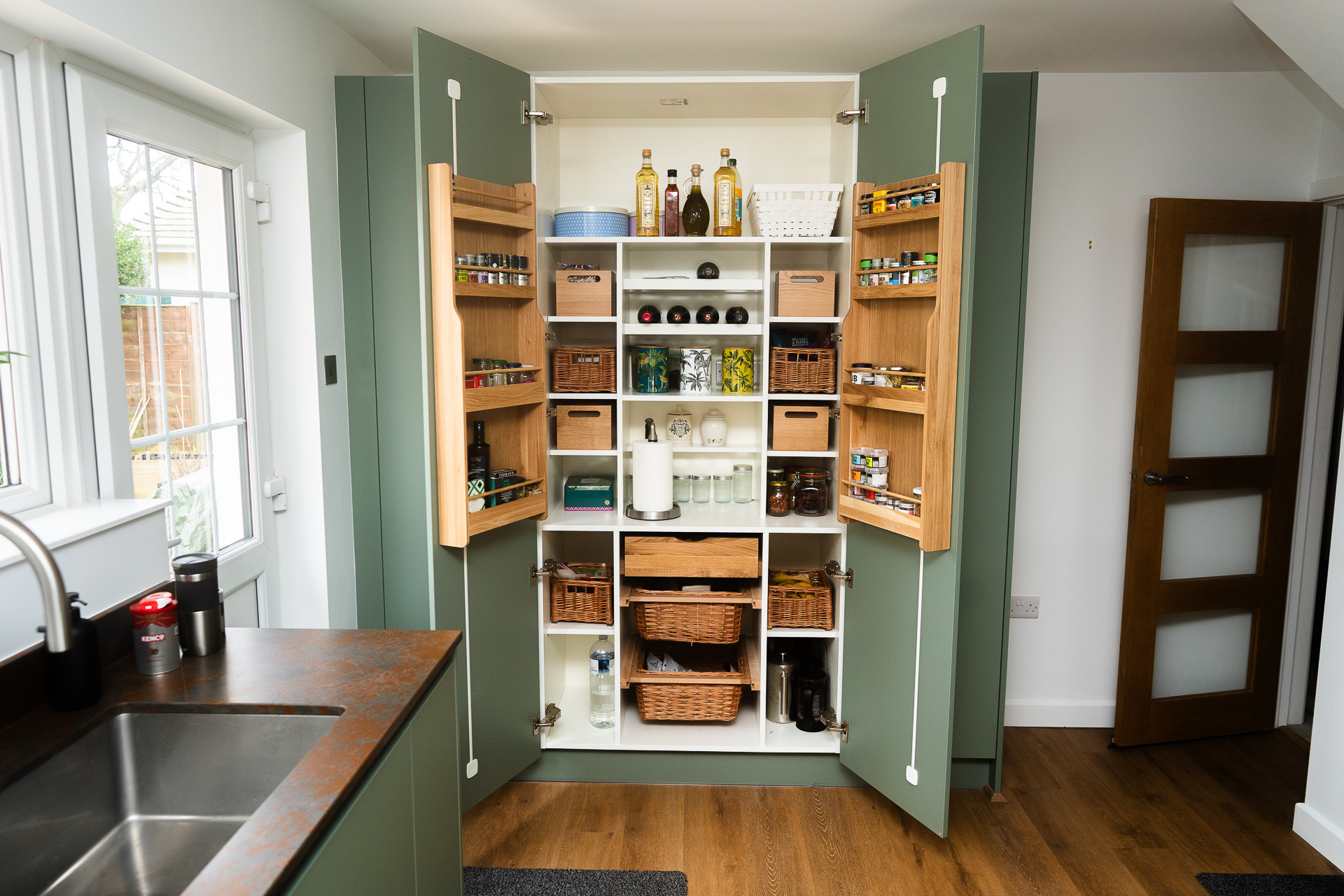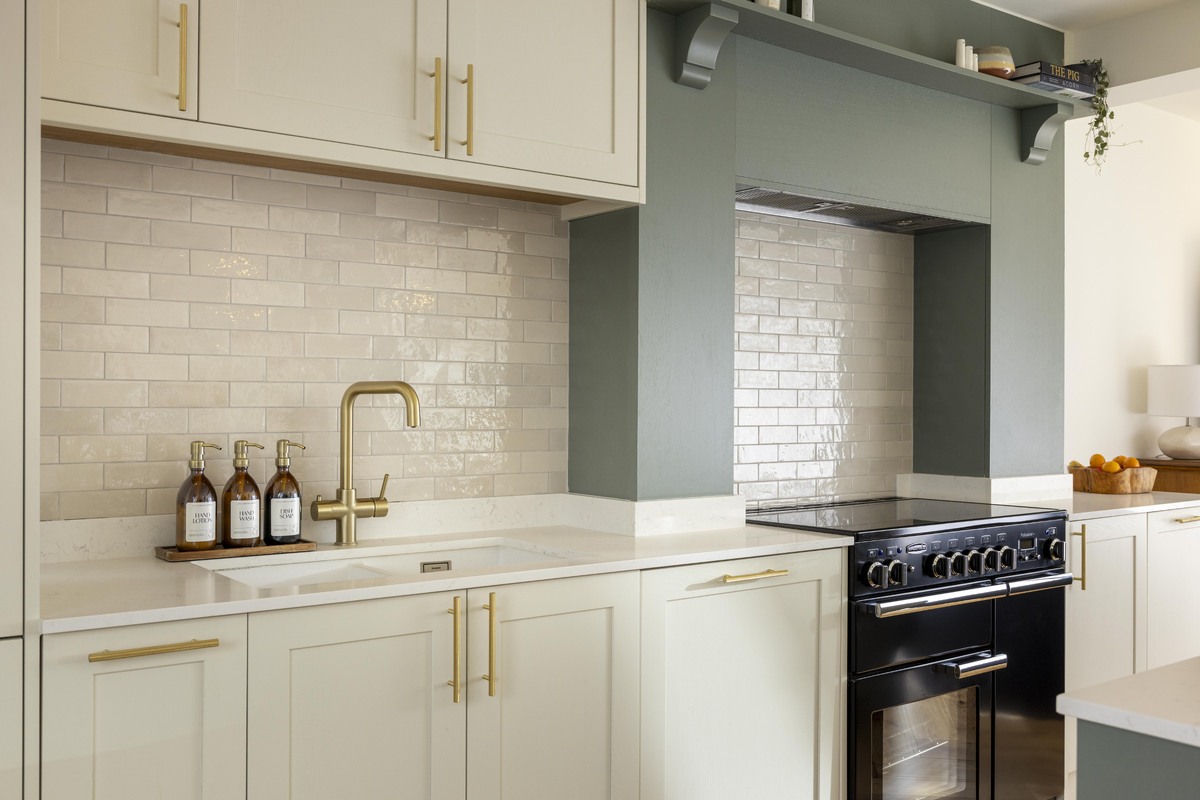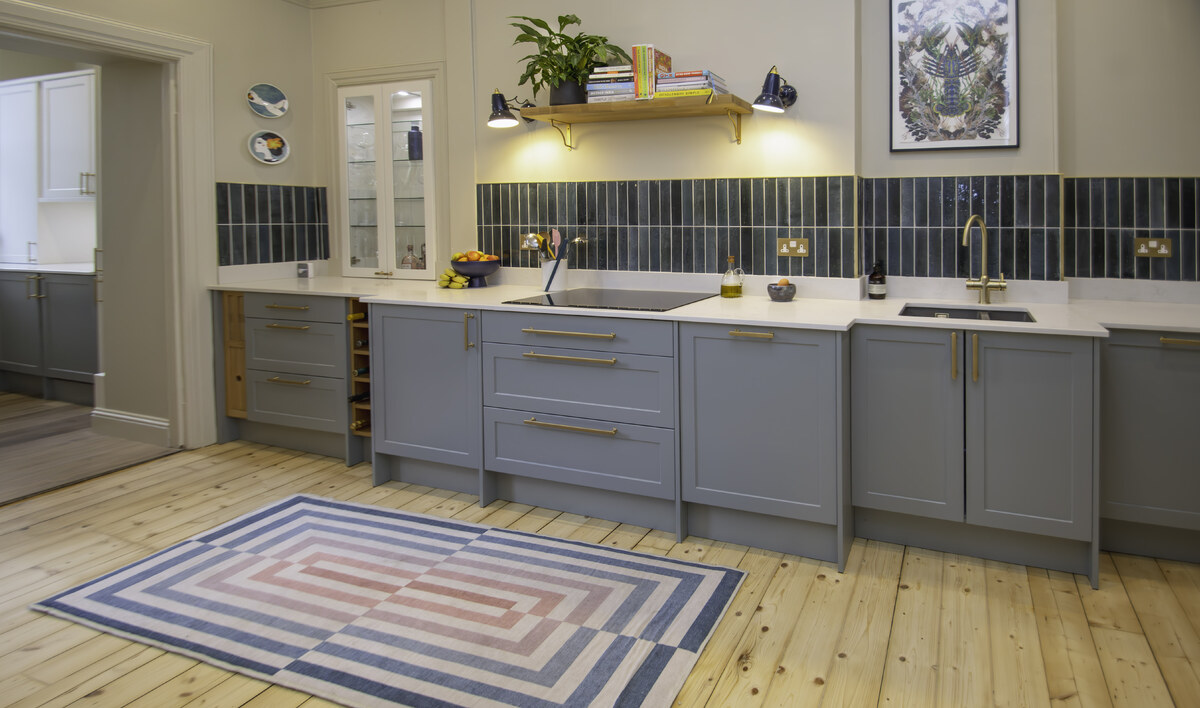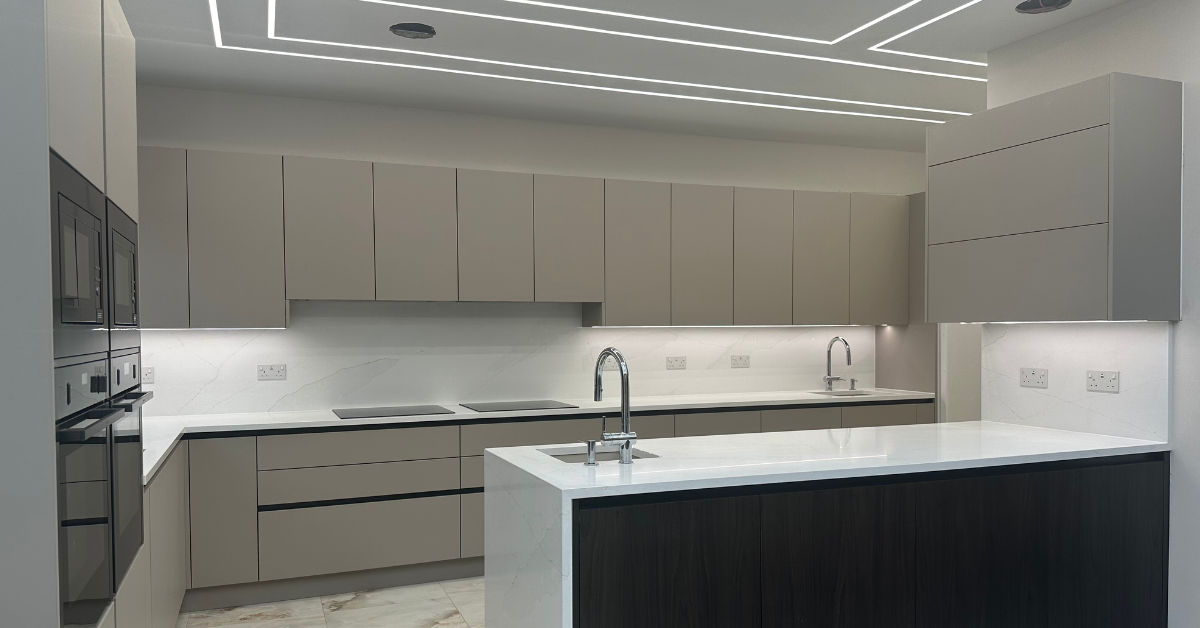Selecting the perfect kitchen worktop can significantly influence the look and feel of your kitchen. With various materials offering distinct features and benefits, it's crucial to understand which worktop best suits your needs in terms of maintenance, durability, and cost. At Raison Home, we not only provide a full kitchen design and fitting service but also share our expertise to help you make informed decisions for your kitchen project.
Exploring different types of kitchen worktops
Laminate kitchen worktops
Laminate worktops stand out for their blend of cost-effectiveness and diverse style options. These worktops consist of a dense chipboard core, topped with a decorative laminate layer. They can emulate a variety of textures and appearances, from natural wood and stone to sleek, modern finishes. Laminate is particularly known for its durability, resisting the everyday wear and tear of kitchen life. Its non-porous nature makes it easy to clean and hygienic, ideal for busy kitchen environments. Moreover, the variety of colours and patterns available in laminate can suit any kitchen design, from traditional to contemporary.
Most laminate worktops are 22 - 38mm thick. Another possibility is 60 mm, which provides a really solid look. This works particularly well with imitation solid wood, which gives a sense of great robustness and authenticity - ideal for kitchens in refurbished homes. And, unlike wooden surfaces, laminate requires no maintenance. A quick wipe with a sponge and it's clean again.

Granite kitchen worktops
Granite worktops are aesthetically pleasing and exceptionally durable. Formed from polished sheets of natural stone, each granite worktop is unique in thickness, colour, and grain. Every granite worktop is unique, with its distinct veining and colouration.
This material is incredibly robust, capable of withstanding high temperatures up to 300°C, and resistant to scratches, making it a long-lasting addition to any kitchen. The elegance of a polished granite surface can elevate the aesthetics of your kitchen, adding a touch of opulence. Despite its strength, granite requires some maintenance, including regular sealing to prevent stains and preserve its natural beauty.

Wooden kitchen worktops
Wooden worktops, made from materials like oak, maple, and bamboo, add natural beauty and warmth to your kitchen. They are hygienic due to their organic properties and can suit traditional or classic kitchen styles. While durable, they require regular oil treatment to maintain their appearance.
There are several options for constructing the ideal kitchen, whether you want an industrial style with wood and black or a more contemporary style with wood and white. The appearance of your kitchen will be greatly influenced by the varnish or paint you choose. The current trend is for homeowners to keep wooden worktops raw and add a protective varnish designed specifically for kitchens - in either a medium wood matt or colourless finish. This type of varnish or natural oil provides additional protection against grease stains and makes the worktop easier to clean daily.
When it comes to worktops, there are several wood options. The main qualities of the wood vary according to the tree. In interior design, the phrase 'wood' refers to a wide range of materials, including European wood, exotic wood varieties, solid wood, and laminated wood. Each type of wood is distinctive and adds character to your kitchen. Examples include beech, bamboo, teak, elm, ash, and oak. A wide range of wood varieties are suited for the kitchen, and prices vary greatly.
Unlike laminate, certain solid wood worktops require additional maintenance. To help prevent stains, use a special oil made for wooden worktops at least twice a year. This continuous application of oil will also protect your worktop from water and moisture stains, which might occur near the sink.

Corian kitchen worktops
Corian, a blend of acrylic resin and natural minerals, is a versatile and modern kitchen worktop choice. Known for its ability to be moulded into various shapes and sizes, Corian allows for creative design freedom, including seamless sinks and joint-free surfaces.
While it's durable and non-porous, making it easy to clean and maintain, Corian is not as heat-resistant as some other materials and can be prone to scratches. However, its range of colours and finishes, from matte to glossy, makes it a popular choice for those seeking a contemporary kitchen look.
Quartz kitchen worktops
Quartz worktops, made from engineered stone, are durable and low maintenance, resisting scratches, chips, and stains. They come in a variety of colours and textures, fitting both contemporary and traditional kitchen designs.
Quartz is popular because it can be used in almost any kitchen style and comes in a variety of colours and finishes (smooth, rough, gloss, or satin). Quartz complements a variety of kitchen elements, including wood, stainless steel, and metal. However, there are several drawbacks to using quartz worktops.
One of the main disadvantages of this material is its level of fragility. It is extremely sensitive to heat. The quartz worktop becomes unstable at temperatures of 150°C and above, so always place a mat or trivet underneath hot pans and oven trays to avoid breaking the worktop.
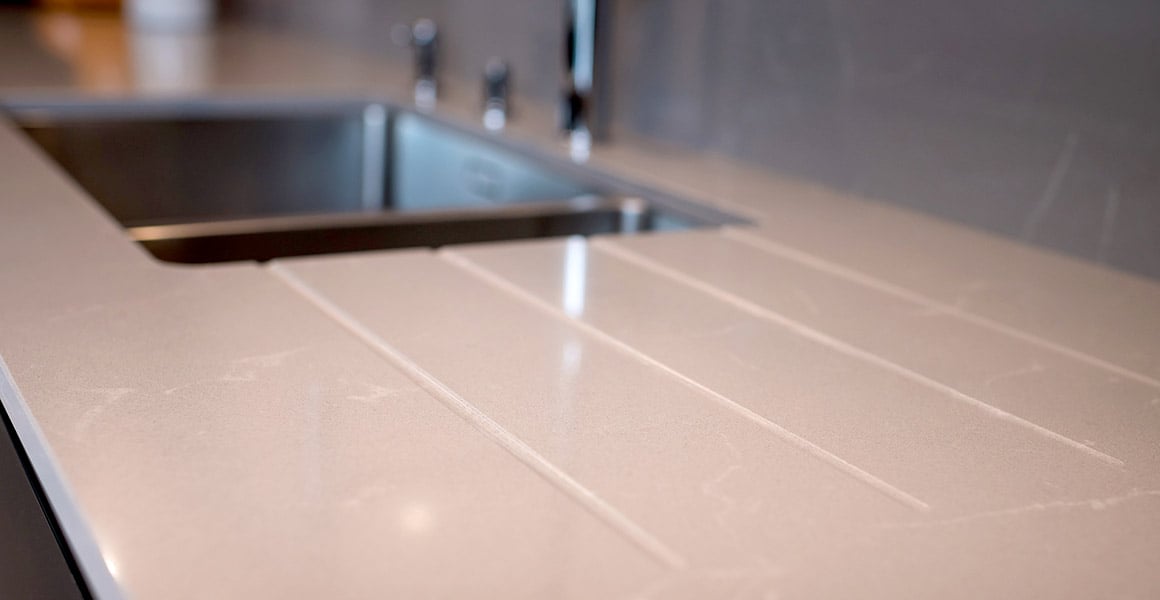
Glass kitchen worktops
A glass worktop is made of toughened glass. Choosing a glass worktop makes the space appear larger and brighter. When compared to other forms of worktops, glass is quite lightweight and straightforward to install. It is sensitive to heat shocks and scratches, and cannot be exposed to temperatures above 120°C.
Glass cannot take large hits and may shatter or break shortly thereafter. Glass, like phone displays and windscreens, is vulnerable to heavy impacts and may shatter or give way shortly afterwards. It is also extremely difficult to maintain glass; once scratched, it is nearly impossible to remove.
Stainless steel kitchen worktops
For years, the stainless steel worktop has been recognised as the favoured workbench among food professionals. It is now found in an increasing number of household kitchens. Despite its fairly cold appearance, the stainless-steel worktop has the advantage of effortlessly fitting into a variety of decors and kitchen styles. You can use it alongside glass, stone, or even wood. It's all about contrasting the coldness of stainless steel with the other kitchen items or even adding a backsplash or painting to provide warmth to the space.
Stainless steel is heat resistant. With this material, you don't have to stress about putting mats under items when cooking. It also has the advantage of being waterproof and detergent-resistant. The simplicity of the design makes it a popular pick. Stainless steel worktops are available in several finishes, including satin, smooth, and brushed. In terms of weaknesses, stainless steel can show visible marks and scratches and is not highly impact-resistant. Despite its ease of maintenance, the stainless-steel worktop is fairly delicate and susceptible to discolouration.
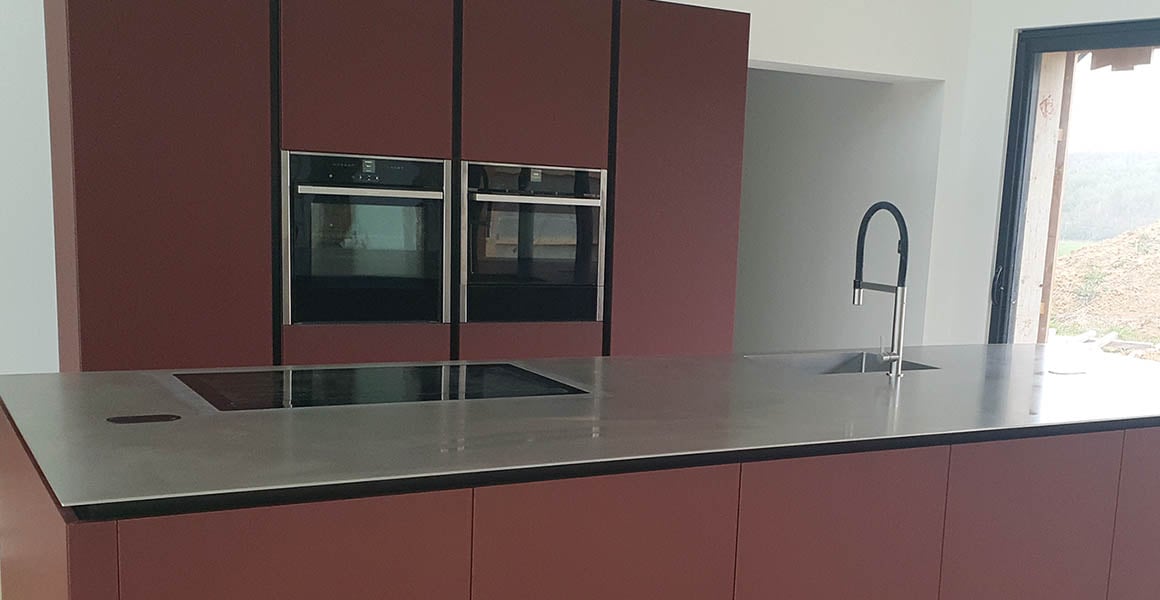
Marble kitchen worktops
Marble is a classic choice for kitchen worktops, renowned for its stunning natural patterns and variety of colours. From elegant whites to dramatic blacks, marble can complement any kitchen design, adding a touch of luxury.
This material is naturally cool to the touch, which is great for baking and pastry making. But it’s important to know that marble is porous. This means it can get stained and scratched more easily than some other materials. It’s particularly sensitive to acidic foods like lemon and vinegar. To keep your marble looking its best, you’ll need to seal it regularly and clean up spills quickly.
Marble isn't as hard as granite, so it can develop a patina over time. Some people love this look for the character it adds, but if you prefer a pristine finish, you might need to put in a bit more effort to maintain it.
Choosing a marble worktop is an investment. It’s usually more expensive than some other options, but it's hard to beat its luxurious look. If you’re ready for the commitment of taking care of marble, it can be a stunning addition to your kitchen.
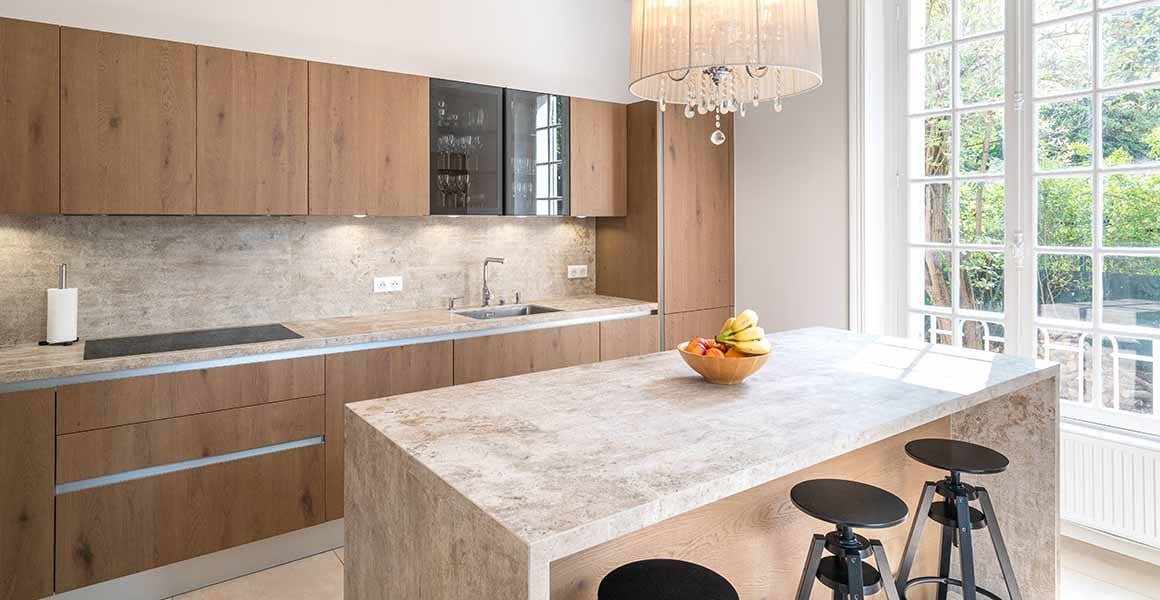
Polished concrete kitchen worktops
Polished concrete kitchen worktops are gaining popularity for their sleek, industrial look. They're a great fit if you're going for a modern or minimalist style in your kitchen. Known for their durability, these worktops can stand up to most of what daily kitchen use throws at them.
One of the appealing aspects of polished concrete is its customization. You can choose different colours and finishes to match your kitchen's design. It has a unique, smooth texture that brings an edgy yet sophisticated feel to the space.
While polished concrete is tough, it's not completely maintenance-free. It's porous, so you'll need to seal it regularly to prevent stains and water damage. Also, be mindful of heavy impacts as they can cause chips or cracks.
As for cleaning, it's pretty straightforward. Wipe down with mild soap and water, but avoid harsh chemicals that could damage the sealant. Polished concrete worktops can show scratches over time, but some homeowners feel this adds to the character of the kitchen.
Price-wise, polished concrete is generally more affordable than natural stone options like granite or marble, making it a cost-effective choice for a modern kitchen look.
Ceramic kitchen worktops
Ceramic kitchen worktops are a smart choice for those looking for both style and durability. These worktops are made from clay and natural stone, offering a hard-wearing surface that's well-suited for the hustle and bustle of kitchen life.
Ceramics are incredibly resilient against heat and stains, which is a big plus if you're often handling hot pots and pans or dealing with spill-prone ingredients. They're also resistant to scratches, making them a practical option for a busy kitchen.
One of the great things about ceramic worktops is the variety of designs available. Whether you're looking for a sleek, modern finish or something that mimics natural stone or wood, there's likely a ceramic option to fit your style. They come in different finishes, including matte, gloss, and even textures that can add an extra dimension to your kitchen's look.
Maintenance is relatively straightforward with ceramic worktops. They're easy to clean with just a damp cloth and some mild detergent. Plus, their non-porous nature means they don’t harbour bacteria, keeping your kitchen hygienic.
When it comes to cost, ceramic worktops are generally more affordable than natural stone options, offering a budget-friendly way to achieve a high-end look.
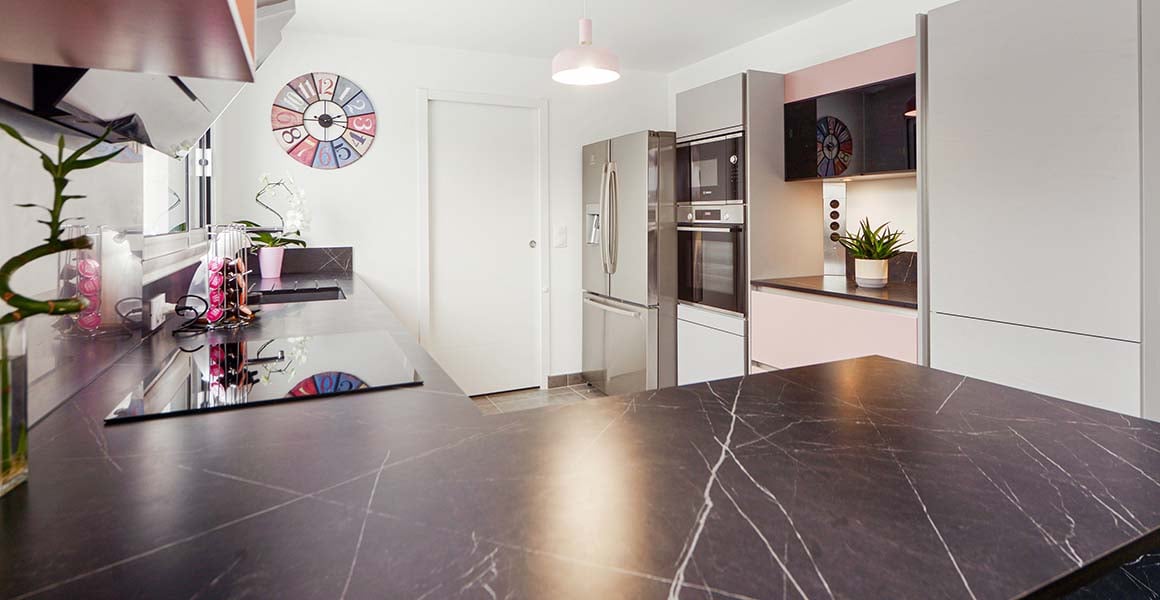
Synthetic resin kitchen worktops
Synthetic resin kitchen worktops are a fantastic choice for those seeking a contemporary look along with practical benefits. Made from a blend of materials like acrylic resins and powdered minerals, these worktops offer a sleek and uniform appearance that can fit seamlessly into any modern kitchen design.
One of the key advantages of synthetic resin is its non-porous nature. This means it's highly resistant to stains and bacteria, making it an ideal surface for maintaining kitchen hygiene. It’s also waterproof, which is particularly useful in a busy kitchen environment where spills are common.
In terms of durability, synthetic resin worktops hold up well against everyday wear and tear. They are generally scratch-resistant, although it's still a good idea to use chopping boards for heavy-duty cutting. Another benefit is the seamless integration this material allows. You can have a worktop that flows smoothly into sinks and backsplashes without any visible joints, creating a sleek, continuous look.
Maintenance is straightforward with synthetic resin worktops. They require minimal effort to keep clean – usually, a wipe-down with a damp cloth and mild detergent is all that's needed. However, it’s worth noting that they can be sensitive to high heat, so it’s advisable to avoid placing hot pans directly onto the surface.
Cost-wise, synthetic resin offers good value for money. It's generally more affordable than natural stone options while providing a high-end look and feel. This material comes in various finishes and colours, allowing you to tailor it to your specific kitchen aesthetic.
Choosing the best kitchen worktop
Your kitchen's functionality and your requirements will determine the best worktop for you. Consider the hardest-wearing options and whether your preferred choice is heat-resistant to make a more informed decision.

What kitchen worktops are best
The best kitchen worktops depend on your lifestyle and kitchen usage. Quartz is durable and low maintenance, while granite offers a unique aesthetic. Laminates are budget-friendly, and woods provide natural warmth. Consider factors like durability, maintenance, and style when choosing.
Are quartz worktops good?
Yes, quartz worktops are a popular choice due to their durability, wide range of colours and patterns, and low maintenance requirements. They are non-porous, resisting stains and bacteria, making them a practical choice for busy kitchens.
Can you paint kitchen worktops?
Yes, you can paint kitchen worktops, but it requires proper preparation and the right type of paint, especially for laminate or wooden worktops. Using a primer and a durable paint designed for kitchens will ensure the best finish. However, keep in mind that painted worktops may need more maintenance and can be less durable than other finishes.
How to fit kitchen worktops
Fitting kitchen worktops involves careful measurement and precise cutting, especially around areas like sinks and hobs. It's often best to get professional help for accurate installation. The process includes securing the worktop to the base units, ensuring a level surface, and sealing any joins or edges.
How to join kitchen worktops
Joining kitchen worktops typically involves using a jig and router to create a neat, tight joint. The joint is then reinforced with bolts and sealed with silicone to prevent water ingress. Achieving a seamless look requires precision, making it a task often best left to professionals.
How to cover kitchen worktops
Covering kitchen worktops can be done with specialised worktop films or wraps. These products offer a way to refresh the look of your worktops without replacing them. They come in various designs and can mimic materials like marble or wood.
Can you wrap kitchen worktops?
Wrapping kitchen worktops is possible using adhesive vinyl wraps. These wraps can refresh the look of your worktops at a lower cost than replacing them. They're available in various patterns and finishes, including ones that mimic stone or wood.
How to clean kitchen worktops
Cleaning kitchen worktops depends on the material. For most types, use a soft cloth and mild detergent. Avoid abrasive cleaners and scouring pads, especially on softer surfaces like marble. For tougher stains, specific cleaners designed for the particular worktop material can be used.
At Raison Home, our expert team is ready to guide you through our wide range of kitchen worktops as part of your renovation project. To start your kitchen design journey and discuss your requirements in more detail contact us.









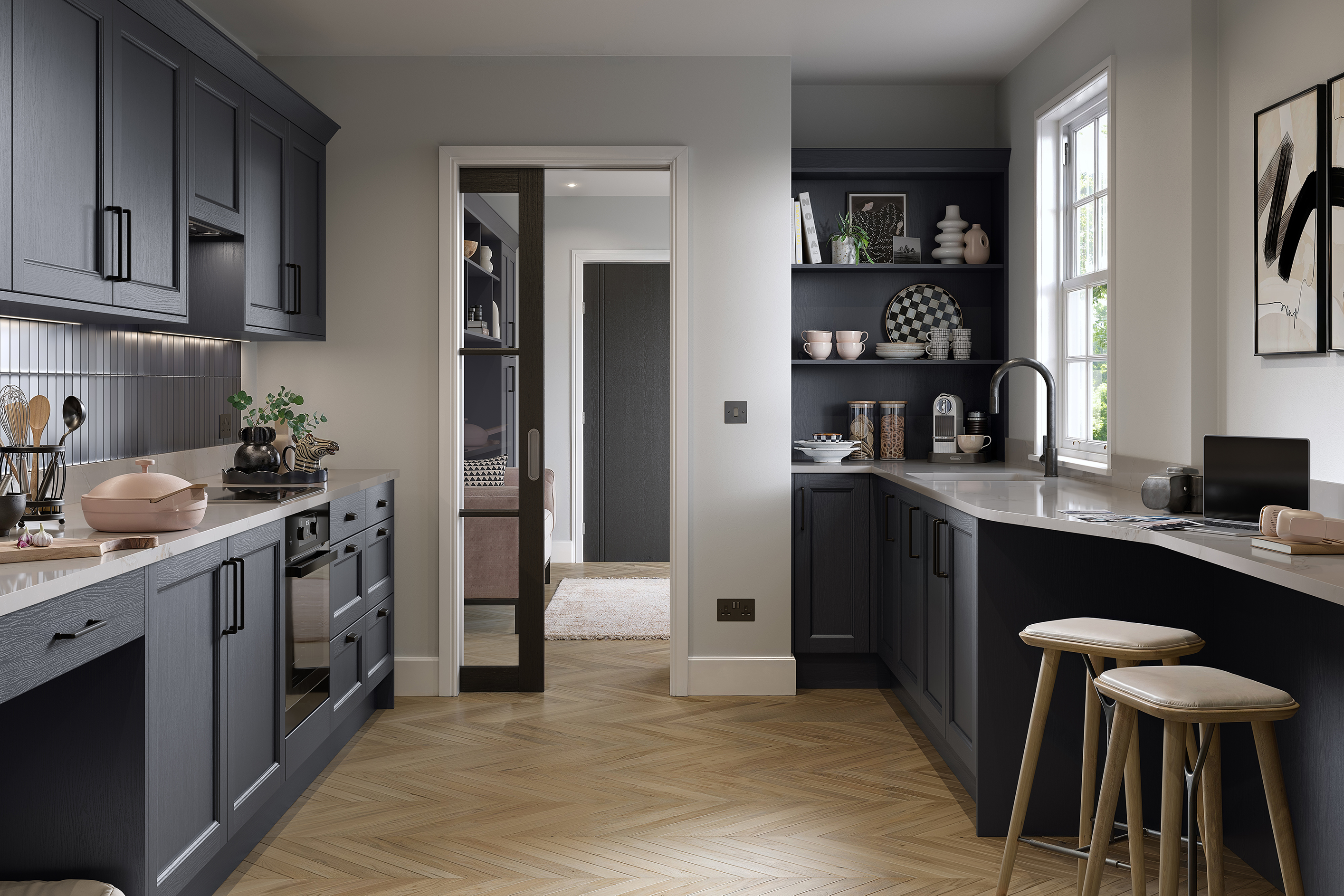
-1.jpg)
